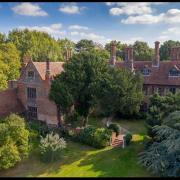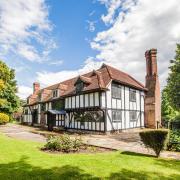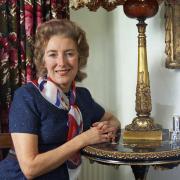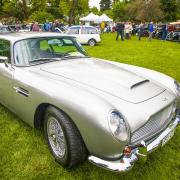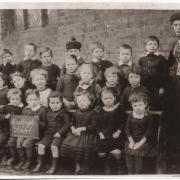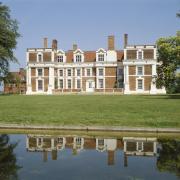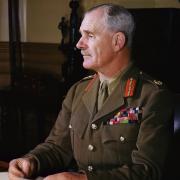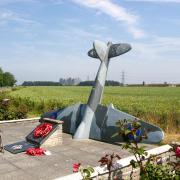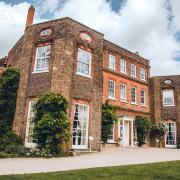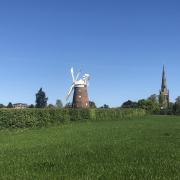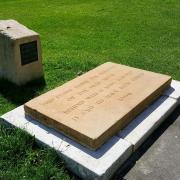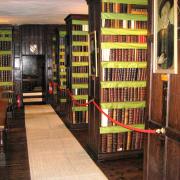It’s not just HM Queen Elizabeth II who’s celebrating a platinum jubilee this year, we also look back fondly over 70 years of Essex Life. Decade by decade, Stephen Roberts will be delving into the historic events that have shaped the county since our launch in 1952. This month we go back to the swinging sixties.
The sixties is the first decade I can remember. It was a transformative time when traditional respect and deference were challenged by rebellion and defiance. The wartime generation looked on askance as youth subcultures proliferated and a vibrant young force found its voice. This was the Swinging Sixties.

On the world stage
For those with one eye on the news it was a worrying time, when it might have seemed worth constructing a bunker in one’s garden. The Cold War was at its height as superpowers the USA and USSR glared at one another suspiciously. The construction of the Berlin Wall began in 1961 and the Cuban Missile Crisis the following year was probably the closest the world came to Armageddon. To show how seriously the threat of nuclear war was taken, a bunker had been established 125 feet below ground at Kelvedon Hatch, Essex, in the early-1950s, which would have become home to hundreds of personnel in a regional government HQ for up to three months. Meanwhile, the Soviet invasion of Czechoslovakia in 1968 showed that reforming movements behind the Iron Curtain would be ruthlessly crushed.

The UK Government sent troops to Northern Ireland in 1969. The Royal Anglian Regiment, only formed five years earlier from county regiments, including the Essex Regiment, served there. Essex folk remember these events, but particularly where they were when they heard that American President JFK had been assassinated in November 1963. Kennedy had vowed to put men on the Moon before the decade was out, which duly happened in July ’69. We were all transfixed, whether we lived in Stapleford Abbots, Steeple Bumpstead or Stondon Massey. These places may have seemed timeless, but this wasn’t true of everywhere: New Town developments continued and some traditional parts of Essex ‘disappeared’ (read on).
Getting political
If the Conservative Party had largely dominated the 1950s, it was Labour’s turn to bag the political bragging rights in the ’60s. There were two general elections, in 1964 and 1966, both Labour wins under Harold Wilson. Having won a narrow majority in ’64, the pipe-smoking Huddersfield-ite called a snap-election in ’66 and was rewarded with a landslide. It was a time of social change reflected in Labour’s programme: capital punishment abolished, theatre censorship ended, male homosexuality decriminalised, divorce laws relaxed, abortion law liberalised.
Whereas the 1950s had seen Essex constituencies mostly returning Conservative MPs, it was a different picture in the sixties with Labour’s improved national showing reflected locally with around half Essex MPs Labour. Two notable Conservative MPs returned in 1964 were Norman St John-Stevas (Chelmsford) and Patrick Jenkin (Wanstead and Woodford) who’d later both serve as Cabinet ministers under Thatcher.
When by-elections were held in Colchester (1961) and Saffron Walden (1965), there were no surprises – both Conservative holds. They were both fairly close-run things though, with only about 3,500 votes between first and second. The runner-up in Colchester, Charles Williams, had been an Essex County cricketer, later a Labour life peer and was step-father to the current Archbishop of Canterbury, Justin Welby. Three years later, Williams lost again in Colchester, this time in the general election.
A time of change
People were flocking in but also departing without perhaps realising it, while the New Town initiative continued in Basildon. Brooke House was a landmark building of the time, built between 1960-62. It was a 14-storey residential tower block designed by Anthony B. Davies, chief architect and planner to Basildon Development Corporation, its raison d'être to introduce high density housing into the town centre. St Martin’s Church is another modern Basildon structure, consecrated in 1962 by the Bishop of Chelmsford, although its landmark glass tower came later. In the same year, the Barstable School opened. It was designed by a Finnish architect and is now Grade II Listed.
Whilst Basildon welcomed newcomers, some Essex citizens found they no longer lived in the county, well, not exactly. The London Government Act (1963) created Greater London and its new local government structure with its boroughs now including: Chingford, Leyton and Walthamstow, Ilford, Wanstead and Woodford, Dagenham, some of Chigwell (including its Hainault Estate), Romford and Hornchurch, Barking and East and West Ham. It must have been odd finding you’d ‘moved’ without setting foot outside the door.
There wasn’t much folk could do about this, unless someone fancied organising a rebellion, which is what happened at the University of Essex in 1968. It was a decade of social unrest, and here the catalyst was a lecture by a government scientist from the UK’s military research facility at Porton Down (Wiltshire), which led to a demonstration against the use of chemical and biological weapons and a week’s stand-off between staff and students. Police were even called to the Colchester campus after students shouted at Dr. Thomas Inch. It was quite a decade for the university: established in 1963, welcoming its first students in 1964 and acquiring university status by royal charter in 1965.
Essex in pop culture
Film and TV continued to find Essex a magnet. The Victors (1963) included filming in the Tilbury area, plus locations in Europe, as the WW2 movie followed a group of American GIs from Britain in 1942 through to war’s end. Doctor Who first aired on TV in 1963, with some of the early filming taking place at the Tunnel Cement Pit, West Thurrock. In 1968, the quarry was the largest cement works in Europe employing 1,200 people and is today home to Lakeside Shopping Centre. Back in the day, it was suitably otherworldly.
The ’60s saw an explosion of popular music, with the Beatles, the Rolling Stones and Roy Orbison all playing the Odeon in Southend in 1963. Ilford-born Kathy Kirby’s popularity peaked in the sixties when her Secret Love reached number 4 in the UK singles chart (1963) and her Eurovision appearance (1965) saw her finish in second place – something we can only dream of these days! She also had her own TV series, The Kathy Kirby Show from 1964-66.

Coffee bars were the preferred meeting places for youngsters, such as the Orpheus in Chelmsford, where the mods gathered. There was no love lost between mods and rockers in the early-60s, with their tribal fisticuffs occurring at resorts such as Clacton over 1964’s Easter weekend. The authorities must have been relieved when aggro gave way to flower power, the ‘Summer of Love’ (1967) and hippies. It had become a decade of counter culture, and the humungous Woodstock Festival in the States (1969) was perhaps its defining moment. The ’60s saw mop tops, bikinis, the introduction of the birth control pill (1960) and ubiquitous lava lamps – everyone had one!
Very sporting
Arguably England’s greatest sporting achievement came in 1966 when its football team won the World Cup. We can claim much of the credit. Manager Alf Ramsey was a Dagenham boy, whilst three West Ham players performed starring roles in the final. Further down the pecking order came Brentwood Town, who reached the FA Cup 2nd Round Proper in 1968-69 and then got what must have been their dream draw: away at Southend United. Dreams became nightmares though when they lost 1-10. Walthamstow Avenue did it again, winning the 1960-61 FA Amateur Cup at Wembley, 2-1 against West Auckland Town, with a crowd of 45,000.

David Jones, a Felsted schoolboy, won a bronze medal at the Rome Olympics in the 4 x 100 metres relay and also set a world record over 150 yards (13.9 seconds) in 1961 in Southend. Colchester-born Paul Nihill MBE won silver at Japan in 1964, in the 50km walk, whilst Rochford duo Keith Musto and Tony Morgan also won silver in the sailing (Flying Dutchman class). A future Olympic gold medallist, Sally Gunnell, was born in Chigwell in 1966.
Comings and goings
Also born in the sixties were England footballers Tony Adams (1966, Romford) and Paul Ince (1967, Ilford), as well as England cricketers John Stephenson (1965, Stebbing) and Alan Mullally (1969, Southend). There were some big actors born in the decade too, including Frasier actress Janes Leeves (Ilford, 1961), Heartbeat star Nick Berry (1963, Woodford) and Eastenders hard man Ross Kemp (1964, Barking). Grayson Perry, artist, writer and broadcaster, was born in Chelmsford in 1960 and actress and author Mo Hayder was an Epping girl, born in 1962. Finally, popular TV presenter and journalist Dom Littlewood was born in Southend in 1965.

It was also time to say farewell to a few Essex notables, including Ursula Tyrwhitt (1872-1966), the painter and draughtsman born in Nazeing. There was also Sheffield Airey Neave (1879-1961), the naturalist and father of the soldier and MP Airey Neave, who retired in Essex for a spot of farming and gardening in 1946, passing away in Chelmsford 15 years later. Finally, Reginald Blyth (1898-1964), the author born in Essex who went to school in Ilford.
Read Essex in the fifties: https://www.greatbritishlife.co.uk/lifestyle/heritage/history-of-essex-in-the-1950s-8949858





